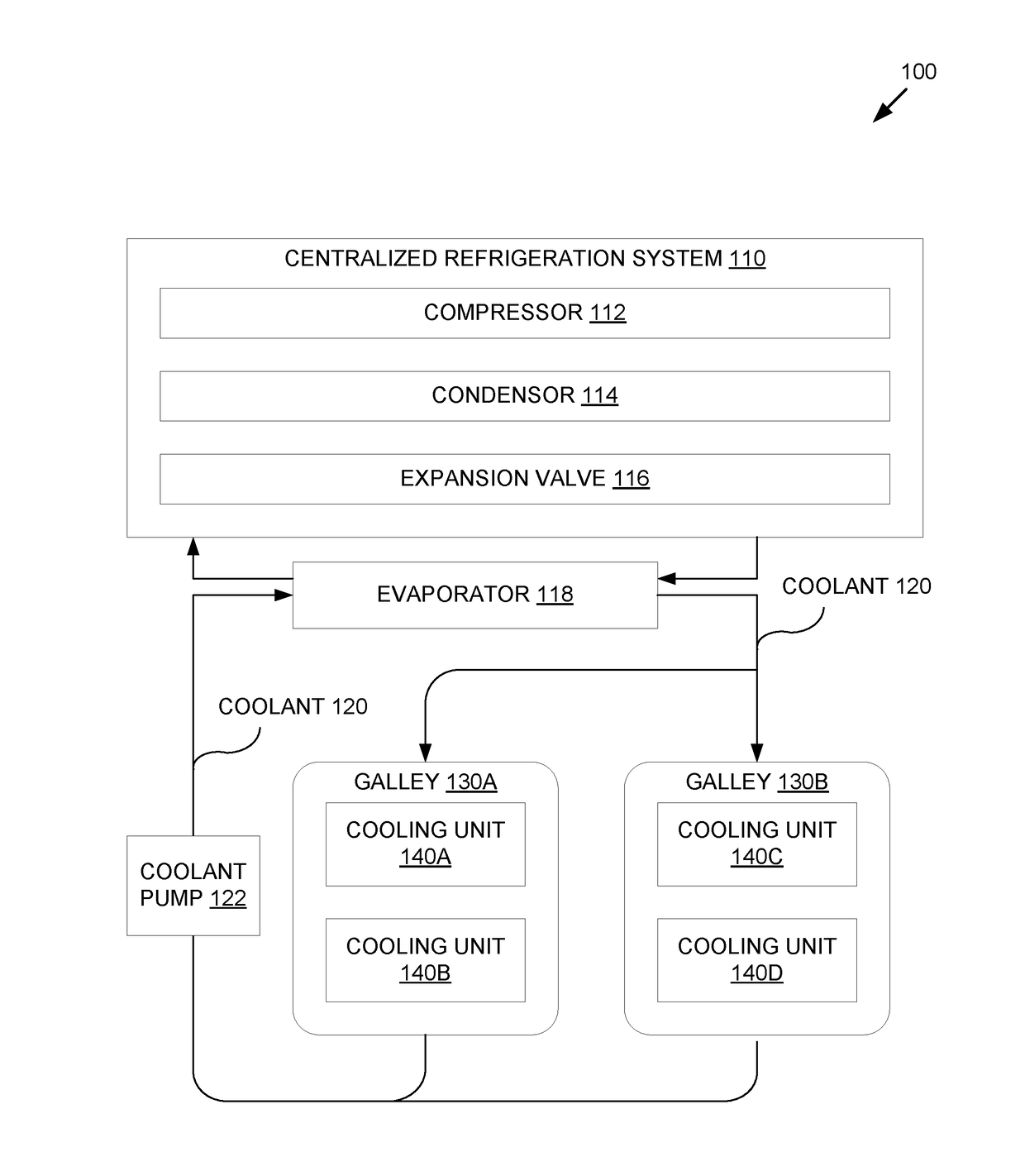Supplemental cooling system load control using random start of first defrost cycle
a cooling system and random start technology, applied in the field of cooling systems, can solve the problems of premature failure, complex process, and rapid increase in compressor pressure ratio and compressor outlet temperature,
- Summary
- Abstract
- Description
- Claims
- Application Information
AI Technical Summary
Benefits of technology
Problems solved by technology
Method used
Image
Examples
Embodiment Construction
[0016]The following detailed description is of the best currently contemplated modes of carrying out exemplary embodiments of the invention.
[0017]The description is not to be taken in a limiting sense, but is made merely for the purpose of illustrating the general principles of the invention, since the scope of the invention is best defined by the appended claims.
[0018]Various inventive features are described below that can each be used independently of one another or in combination with other features.
[0019]Broadly, this invention relates to providing load control for cooling systems. In this invention, each cooling unit in a cooling system may be configured to start a first defrost cycle at a random time within a predetermined time range after the cooling unit is started or powered on. After the first random start defrost cycle, a regular periodic defrost cycle may be maintained. In this manner, all of the cooling units can be turned on at the same time while providing desynchroni...
PUM
 Login to View More
Login to View More Abstract
Description
Claims
Application Information
 Login to View More
Login to View More - R&D
- Intellectual Property
- Life Sciences
- Materials
- Tech Scout
- Unparalleled Data Quality
- Higher Quality Content
- 60% Fewer Hallucinations
Browse by: Latest US Patents, China's latest patents, Technical Efficacy Thesaurus, Application Domain, Technology Topic, Popular Technical Reports.
© 2025 PatSnap. All rights reserved.Legal|Privacy policy|Modern Slavery Act Transparency Statement|Sitemap|About US| Contact US: help@patsnap.com



